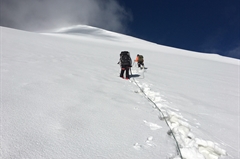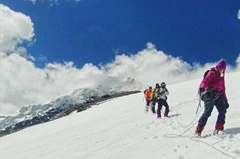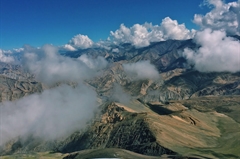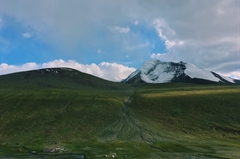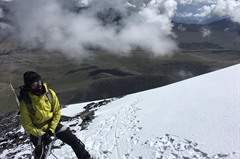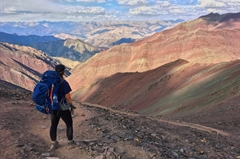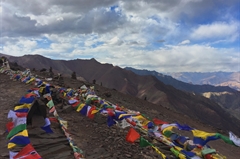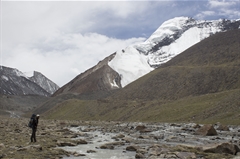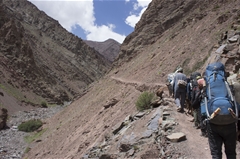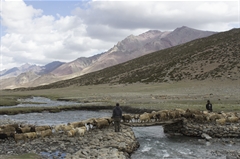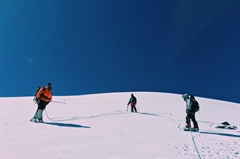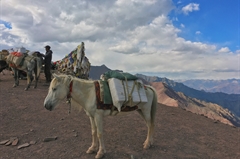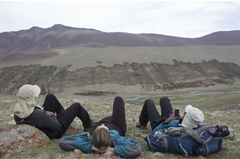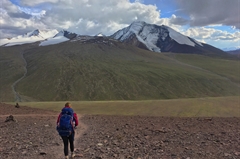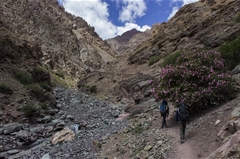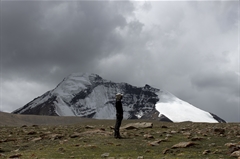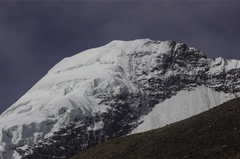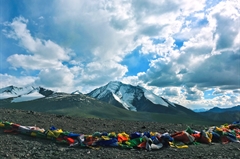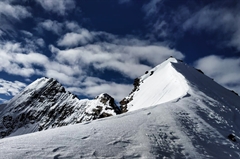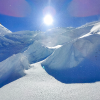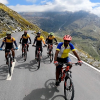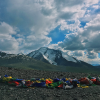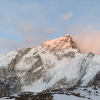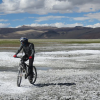Kang Yatse II Peak Trek
A Semi-Technical Peak in Ladakh
Kang Yatse II Peak Trek
Add ons
Available Batches
Available Batches
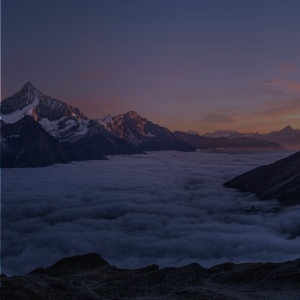



Brief Description
Brief Itinerary
Detailed Itinerary
Day 1
Arrive in Leh (3,500 M)
The trek starts from Leh, which is a headway into Ladakh that is home to some of the highest peaks in the region. It is also a very popular tourist destination and hence fairly accessible. If you need guidance on how to get to this high-altitude hub of mountaineering, this article (Travel options from around Leh) might be useful.
Day one is reserved for the climbers to make their way to Leh and get settled into their accommodation. Since climbers will be coming to this altitude from sea level, the body will need time to get comfortable with the mountain air.
Day 2
Rest and Acclimatization in Leh (3,500M)
Day two is reserved for rest and acclimatization to the altitude, too. This is important to allow your body to adapt to its new environment and reduce chances of adverse health conditions. You can go around and explore the city market, delve into the colors and culture of this high-mountain city and visit some places nearby. A little movement around the city would be good for acclimatization. Also, use this time to go through your checklist and do some last-minute shopping for what you might be missing for the expedition. Leh has the best market for trekking essentials.
While the body acclimatizes, we take this time to get together with the group for a debriefing session where we get to know each other better and delve into the happenings of the next few days - schedule, what to expect, basic do's and don'ts in the mountains, how to maintain the sanctity of the environment and other such matters of importance.
Day 3
Leh (3,500M) to Skiu (3,500M) (Click to View GPS data)
Distance: 35 kms
Duration: 3 hours
The drive from Leh to Skiu is the perfect introduction to the general terrain we are about to enter for the next few days. We assemble and leave for the day between 10:30 AM and 11:00 AM so that we can make it to the campsite, set up our tents and have hot lunch as we settle into this new environment. The drive is smooth. The road goes through a flat and desolate plain alongside river Indus until we reach its confluence with the distinctly coloured Zanskar River in close to an hour and a half. In this short drive, we witness barren mountains of all shapes, forms and textures – slabs of rock stacked one of top of the other neatly, chunks of rock resting on each other haphazardly, sheets of rock hard-pressed into each other, loose rocks, mountains made of mud, and much more. The entire set up looks like an experimental playfield of forms for the creator where He dumped all the discarded versions of His clay models.
After coming through some of the driest areas you will witness, we reach the campsite by lunch time. This is amongst the many scattered and tiny hamlets spread out in the area which makes it a little green for all the fields of the locals. The freshness of vegetation is a sight for sore eyes.
Once we set up camp and are finished with lunch, we go for a little acclimatization walk in the early evening. The acclimatization walk is extremely important as it’s a new terrain and the body needs time to adapt to new conditions. Remember to carry a bottle of water everywhere you go. It won’t be long before you realize the weather here is peculiar – extremely hot, extremely dry and extremely arid. The heat turns you into a crisp and your throat is likely to feel dry. This, however, is normal. Give your body some time to recalibrate.
Day 4
Skiu (3,500M) to Sara (3,500M) (Click to View GPS data)
Distance: 11 kms
Duration: 6 hours
Distance: 11 km
Time Taken: 6 hours
The first thing you would have noticed on entering Ladakh is that it is extremely dry – your throat is likely to feel scratchy and your face burnt from all the unobstructed heat that the land receives all day under the harsh sun. Marka valley is a long extension of this parched feeling. Imagine walking in the harsh sun on wide, open lands with no respite from the heat, surrounded by mountains that look like they could come crumbling down at any point; they just aren’t doing it out of the goodness of their hearts! This is Markha valley trek – a civilization of mud, heat and insurmountable beauty of a peculiar kind.
It is a long day so we start as early as possible. Right after an early yoga session and breakfast, we pack up our tents and get moving towards Markha Village by 08:30 AM. Mornings, in this terrain tend to get a little chilly; don’t forget to layer up accordingly. The trail today is easy and mostly straight with a few sections of ascent. The pointed rocky peaks, the poplar trees, and the muddy trail, they seem like a constant picture through which we walk for 5 days to get to the camp of Kang Yatse I – quiet and still. The river shining silver in the bright, harsh sun is the only thing that mimics movement in this otherwise static landscape – snaking through the bed of the valley in gushing streams. Two and a half hours into the trek, we cross a small wooden bridge over the aggressively flowing murky stream. And within an hour from then, we reach Sara, which is our destination for the day. The trail is mostly dirt roads and the rocky sea bed.
Day 5
Sara (3,500M) to Umlung (3,901M) (Click to View GPS data)
Distance: 15 kms
Duraton: 6-7 hours
Distance: 15 km
Time Taken: 6-7 hours
We continue on the trail from yesterday, onwards to Umlung via Markha Village which, with upwards of 40 households, is the largest village in the valley. The trail gradually ascends 300M across 10 km, so it is not a heavy day. The terrain also remains the same as yesterday and hence is easier to cover because of familiarity with the topography. We reach the campsite in time for a hot lunch. After setting up our camps in this campsite in the midst of the tall green grass with a backdrop of barren mountains, we go for an acclimatization walk in the evening. The rest of the day is to explore the setting and rest our weary selves.
Day 6
Umlung (3,901M) to Thochungtsey (4,298M) (Click to View GPS data)
Distance: 8.5 kms
Duration: 5 hours
Distance: 8.5 kms
Time Taken: 5 hours trek
Today we are covering as much ground as we did yesterday. The terrain remains fairly the same, with long patches of even land with a few ascents and descents along the way. Just like Day 4, we start today as early as 08:30 in the morning. Within an hour into the trek, we reach our first river crossing. The water levels here are extremely unpredictable. Depending on the level of the water, you will either find yourself wading through waist deep current or cross the stream in a hop, skip and jump.
Within an hour of crossing the river we reach Tacha Gompa – a monastery high up on a steep incline, precariously standing dressed in mud on top of a muddy mountain. In another hour we climb a small patch of steady incline leading to a small village canteen where we get some refreshments and well-earned rest. Our campsite for the day is a two hour trek from here. One hour into the trek, we start seeing Lower Hunkar. It is a clearing where large bushes end and the landscape opens up to views of mountains disappearing into each other. This is when you start climbing a little farther up from the river bed. While the trail misses an uneven terrain which can get monotonous at times, but constantly dipping your feet in icy water has a way of jolting you back to attention.
We set up our tents in the middle of wheat fields. Far away villages with houses lined far apart stand guard around the tents, in the background.
There is a lot to explore around Thochungtsey on our acclimatization walk later in the day. This is one walk you won’t complain about!
Day 7
Thochungtsey (4,298M) to Kang Yatse Base Camp ( 5,100M) (Click to View GPS data)
Distance: 8-9 kms
Duration: 6-7 hours
Distance: 8-9 kms
Time: 6-7 hours
Sitting in the heart of a chilly morning, the sunlight inching towards you is one of the best sights - to see it slowly crawl to you like it is teasing you!
We are gaining quite a bit of altitude today and there is also a lot of ground to cover, so we start as early as our previous days.
We pack up our tents and leave the campsite by 08:30 AM. Fifteen minutes of sharp ascent and a 100M altitude gain later, we will reach Upper Hunkar – a small hamlet with houses nestled right in the middle of bright green fields bordered with flowers. Every village in this valley is adorned with prayer flags which add to the colour palette of the otherwise dichromatic color scheme. Also, you will find religious boulders called Mani stones in every village and on the trail between the many villages. These are stone plates and rocks inscribed with Buddhist mantras adding to the inimitable vibe of the valley. Mani stones are placed alongside the roads and rivers or sometimes placed together to form a mound as an offering to the spirits of the place. The beliefs of the locals dictate that these structures be crossed from the left as a continuation of their belief of the universe revolving in a clockwise direction forming circular patterns which are seen as a repetitive pattern in all Buddhist customs.
The fields in every village form peculiar geometric patterns adding to the atypical aesthetic of the place. We circle around the village of Upper Hunkar to get to the other side and then turn left into the valley towards the side you start to see Kang Yatse. We continue alongside the river on rocks and boulders. In an hour’s time, we leave the river’s side and make a steep ascend on a muddy mountain. The peaks in this region look like cardboard mountains, sturdy but bent in places in strange ways ready to crumble on one harsh blow. Nothing in the valley is in any hurry except that one lost cloud in the otherwise blue sky which is trying to go places. Yellow and pink flowers add to the chiaroscuro as every blind turn revels a different view holding new secrets waiting to be uncovered.
Within half an hour of the ascent, we reach a small patch of descent taking us to a bridge to be crossed over to the other side of the river. Our resting point is a desolate campsite at 4,195M where we fill water from a fresh water spring and lay down for a bit in the abandoned stone structures. We have now left the river behind. From here on, we start on a continuous but gradual ascend all the way up to Twin Lake. It will take us three hours to get there from our resting point. Twin Lake provides for the best views of Kang Yatse I as well as Kang Yatse II. The lake itself is embellished with prayer flags and a Buddhist statue bang in the middle of the quiescent water of the lake. There is a small enclosure used as a place of worship, right next to the lake.
The route from the lake splits into two – one descending down towards Nimaling and one which takes you to the base camp of Kang Yatse I. We make a right here and head towards the Base Camp. It should take us close to two hours to make it to the base camp. We set up our camps here and call it a day.
Day 8
Rest and Acclimatization at Basecamp (5,100M)
Today is reserved for acclimatization to the altitude since we gained quite a bit of height the previous day and have also entered a much different terrain. We use this time to distribute equipment and gears required for the climb and also to practice basic techniques we will require on our summit push tonight. After a late breakfast and equipment disbursement, we go to a nearby slope for training and to get comfortable with our equipment - snow boots, ice axes and crampons. We will learn techniques and calls of roping up and ascending and descending on a snowy terrain. We also learn to use ice axe to facilitate our climb and for safety on such a crevasse-ridden terrain.
We end the day early so that we can get optimum rest before our climb tonight.
Day 9
Base camp (5,100M) to Summit (6,250M) to Base Camp (5,100M) (Click to View GPS data)
Time Taken: 11-12 hours
Today is THE day! We leave for our summit push between 11 PM and 12 AM. It is going to be a cold night and a very long day. We start climbing the slope to the right of Base Camp until we reach the top of the ridge. Although the trail is well marked, the terrain changes here to loose scree and moraine which gets slippery and needs to be traversed with caution. We keep climbing the ridge until reaching the ablation zone of the glacier from the north face of Kang Yatse II. After a short 100m climb up the moraine ridge, we rope up and enter the glacier. We will traverse the north face toward the northwest ridge while steadily climbing upwards. Once we climb around the northwest ridge, we climb straight above a rocky outcropping and follow the ridge to the summit. We should reach the top of the mountain between 7-8AM, wait there to soak in the majestic view and start to head back down. We should reach back to the safety of our tents on base camp well before the snow starts to get unstable and just in time for some hot lunch.
Day 10
Reserve Day
In case of bad weather or other difficulties, Day 10 is reserved for a second summit attempt. This will only get used if unexpected and unforeseeable conditions present themselves at the last minute preventing the first summit push.
Day 11
Basecamp (5,100M) to Leh (3,500M) via Kongmaru La Pass (5,236M) (Click to View GPS data)
Distance: 15 kms
Duration: 8 hours trek + 3 hours drive
The thing about Kang Yatse is that all the days on this trek are long, as is today. Today we take a different route down to Leh, through Kongmaru La pass which lies at an altitude of 5,236M. We start early since there is a lot of ground to cover before we reach the road head from where we will get our drive to Leh. The morning is spent in wrapping up our campsite and heading back down. The route till Nimaling is the same we took to climb up. From Nimaling, we start to climb the mountain on the opposite side. The sun blushes all shades of red, from pastel to a bright orange as the clouds run amuck in all directions. The sunlight makes the snow on the peaks shine like wildfire adding to the drama of the landscape. At Nimaling, the river flows urgently from the meadows towards the mountains as the many animals, in their morning glory, romance the land below. There are no dangerous patches on this day but the distance and the dry terrain make it a rough undertaking.
The climb up to Kongmaru La pass is a few patches of steep incline between long distances of flat land rich in pikus and marmots. We reach the base of the pass from the base of the mountain in 3.5 hours after which there is a steep incline for half an hour to get to the top of the pass. The pass provides for magnificent views of Kang Yatse I, Kang Yatse II and Dzo Jongo. Adorned with prayer flags, the wind on the pass is fierce. Locals climb here very frequently to make phone calls – this place receives high speed internet and a strong phone network which you lose 5 steps on either side of the pass. It is close to 2 kms from Nimaling to this place.
From the pass, it is only descent on a narrow trail, through gorges and water crossings with the valley appearing and disappearing on every turn. The terrain is interesting in its colours with rocks across the colour palette, to geological formations with massive walls of rocks standing vertically on either side of you and the gush of water filling up these narrow passageways to the strangest and most interesting fauna you will ever see. It is 3.5 hours of up, down, sideway and any other direction you can think of to cross this section to get to the end point of Chokdo from where we begin our 3 hour drive to Leh.
Expect to reach Leh by late evening.
Day 12
Departure from Leh (3,500M)
The trek ends here but not before some celebration. How can we end this adventure without a summit party?
If you plan to stay for a few more days to explore the wonders of Ladakh, the article below might help start you off on what places to consider. (Places to visit in Leh Ladakh)
Like we indicated before, the weather on high-altitude is unpredictable as are many other conditions. We would suggest you keep spare days between the end of the expedition and your travel arrangements to head back home.
What's Included
- Guest House Stays in Leh (Day 1,2 and 11)
- Trek Meals (Starting Lunch on Day 3)
- Technical equipment - Ropes, Helmet, Ice Axe, Crampons, Mountaineering Boots
- First aid medical kits and oxygen cylinder
- Qualified & experienced trek Leader, Guide and Support staff
- Transport from Leh to Road head and return
- Camping during the trek
- Tents, Sleeping bags, Sleeping Mat, Gaiters, Crampons, Microspikes
What's Not Included
- Meals in Leh
- Meals during road journeys
- Any kind of personal expenses
- Any kind of Insurance
- Mules or porter to carry personal luggage
- Anything not specifically mentioned under the head Inclusions
- Inner Line Permit Fee
- Expedition Permit Fee of USD 50 per member for foreign nationals & INR 1000 per member for Indian Nationals.
- Buffer /Reserve Day Cost if it is utilized
Are you Eligible for this Adventure?
Kang Yatse II Peak Trek, at an altitude of 6,250M, is a challenging climb suitable for trekkers with prior experience of high altitude treks. It is great for those who want to advance from trekking to climbing.
BRS Level Required
This makes it mandatory for you to have high-altitude experience of preferably multiple treks marked at level 5 on the BRS. The altitude, the terrain and the nature of the climb demand a certain level of skill and a need for you to be aware of how your body reacts to the various features of a high altitude environment.
If you do not know what level of BRS trek would suit you best, worry not! Fill out this Form:
we will send you a progression chart to help you comfortably get out of your comfort zone in order to level up and ultimately reach your highest potential in the big, bad world of outdoor adventure.
Packing List
This is a list of essential items for individuals doing the trek with Bikat Adventures. This list contains only those items which the participants are required to bring with them. The list excludes those items which are provided by Bikat Adventures on the trek. We have divided the items into five categories. All the items in the list are essential except for those marked as optional.
Trekking Gear
- Ruck sack bag with rain cover. Qty -1
- Day Pack Bag - Recommended for treks with summit day
- Head Torch with spare Batteries. Qty -1
- U V protection sunglasses. Qty -1 Here is how you can choose the best sunglasses for trekking.
- Water Bottles: 2 bottles of 1 liter each
Footwear
- Non-skid, deep treaded, high-ankle trekking shoes Qty -1
- Pair of light weight Slipper/Sandals Qty -1
Clothing
- Quick Dry Warm lower or Track Pants. Qty - 2
- Full sleeves T-shirts/ Sweatshirts. 1 for every 2 days of trekking
- Pair of thick woolen socks. 1 pair for every two days of trekking
- Thermal Body warmer Upper & Lower. Qty-1
- Undergarments. Qty - 1 for every day of trekking
- Warm jacket closed at wrist & neck .Qty-1
- Full sleeves sweater. Qty -1
- Rain wear ( Jacket & Pants ) . Qty-1
- Pair of waterproof, warm gloves. Qty-1
- Woolen cap. Qty-1
- Sun shielding Hat. Qty -1
Toiletries
- Personal toiletries kit (Small Towel, Toilet paper, paper soap, Bar soap, toothbrush, toothpaste, cold cream, etc.)
- Sun screen lotion small pack. Qty -1 Here is your Sun Protection 101 to stay safe in the bright sunny outdoors.
- Lip Balm small pack. Qty-1
Utensils
- Small size, Light weight & Leak proof lunch box. Qty-1
- Plate. Qty- 1
- Spoon.Qty-1
- Tea/Coffee (plastic) Mug.Qty-1
Miscellaneous
- Camera (Optional)
- Carry your medicines in plenty in case you have any specific ailment. Consult your doctor before joining the trek.
- Dry fruits, Nuts, Chocolate bars (Optional)
Frequently Asked Questions
Why Bikat?
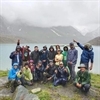

Small Group Size
Our batch sizes are capped at 15 for smaller treks with the trek leader and trekker ratio of 1:8. This ratio, in our years of experience, has proven to deliver the best trekking experience for individuals as well as groups. Capping the size of the group ensures individual attention to each trekker so that no signs of distress or need during the trek go unnoticed. It also helps to form a more cohesive cohort with better group energy which helps define the rhythm and pace of days on the trek. As you go higher up on the BRS scale, since the stakes are higher, expeditions have an even smaller group size with the ratio of expedition leader to climber set at 1:2.
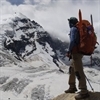

Qualified Trek Leaders
We follow a rigorous regime of hiring and training our experts in the field. Each trek leader is a certified mountaineer with years of experience in the field. In addition to their qualification, they also go through practical and situational training to tackle any and all kinds of sudden conditions that may present themselves on the ground. Being unpredictable is the core nature of the mountains but being ready for any circumstance as best as possible is a controllable asset that we try to nurture. Our field experts are also trained in basic medicine and first-aid response. Watch: Forerunners - The Making of A Trek Leader At Bikat Adventures
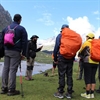

Guided Progression
Since Bikat Adventures is a learning-based organization, we help you climb up the ladder of difficulty within the sphere of outdoor adventure systematically. Our on-ground training modules are designed to handhold you through the upskilling process so that you are ready to take on bigger challenges.
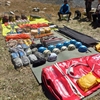

Equipment Quality and Check
All the gear used on our treks and expeditions is tried and tested, maintained for good quality, and is overall top-notch in quality and condition. We are continually looking to obtain the best of everything there is in the market so as to ensure optimum safety.
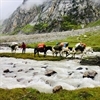

Support Systems
Along with the staff you see on-ground, we have a team of superheroes working in the background to give you the best experience possible. Our background team also comprises local staff from each area who know the region best. Having local support helps with studying the area, pre-planning, execution, and in receiving timely support in case of emergencies in these remote locations.
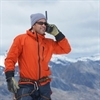

Communication
Our on-field staff is in constant contact with our teams based in primary locations so as to eliminate any avoidable delay in reaching additional help and support when required. We try to use the best tools for communication available, including satellite phones, in regions where they are not restricted.
What our customers Say
Cancellation Policy
Cash refund
Cancellations up to 60 days prior to departure date
Between 60 days upto 30 days prior to departure date
Between 30 days upto 10 days prior to departure date
Less than 10 days prior to departure date
Voucher refund
Cancellations up to 30 days prior to departure date
Between 30 days upto 15 days prior to departure date
Between 15 days upto 10 days prior to departure date
Less 10 days prior to departure date
- Cash refund is applicable only in case of bookings made without using any promotional offer code or Cancellation Vouchers or Discounts
- This is only a brief of cancellation terms. For finer details please refer Detailed Cancellation Policy.
Blog Posts
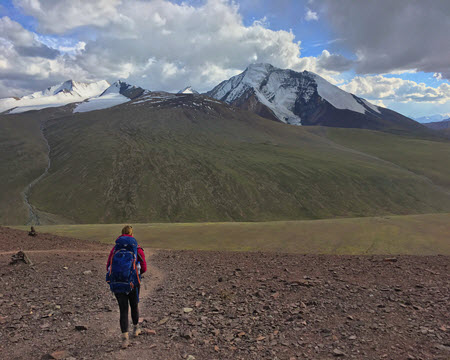
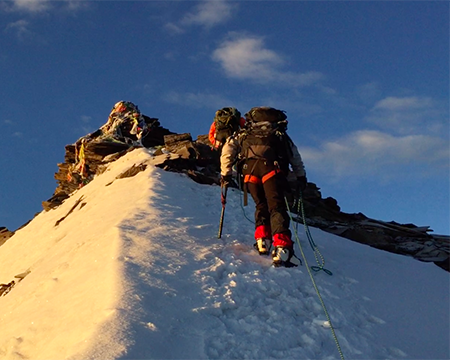
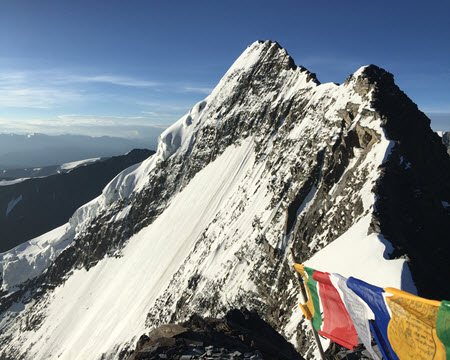
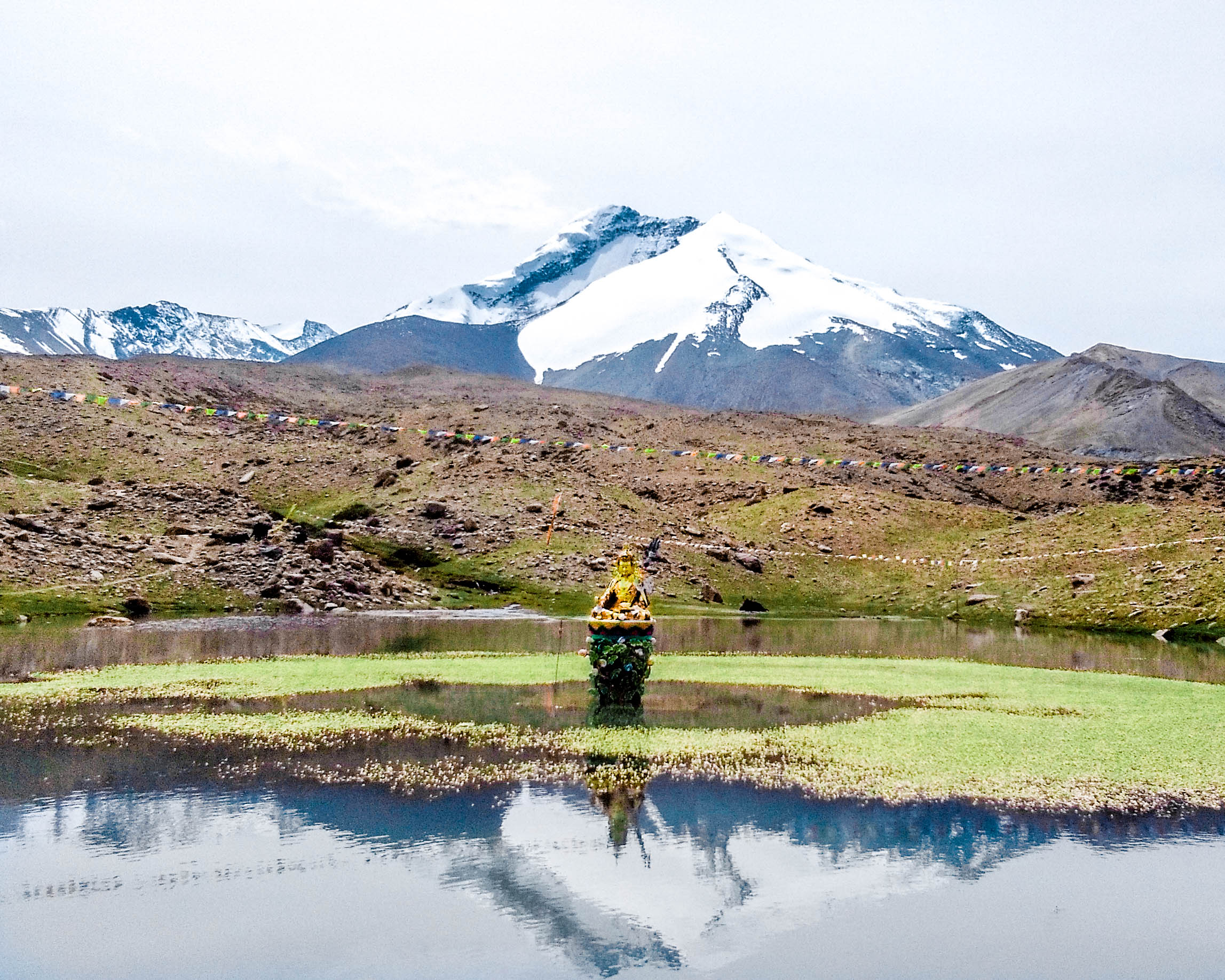
Similar Adventures
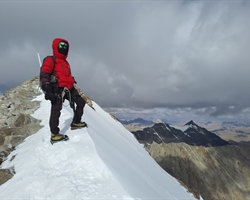
Dzo Jongo Peak Trek
An off-beat hidden gem of Ladakh
Ladakh
10 Days
BRS 6
6240 m
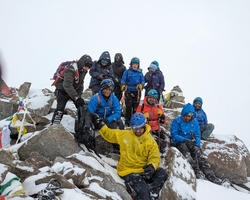
Kang Yatse II & Dzo Jongo Peak
Double Delight- Best of 6K Peaks in Ladakh
Ladakh
14 Days
BRS 6
6250 m
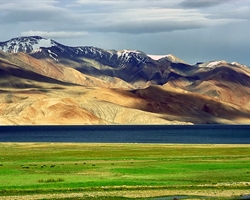
Mentok Kangri II Expedition
Ladakh
11
BRS 6
6250 m
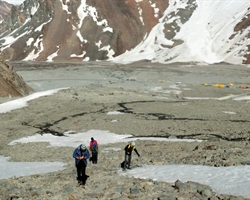
Yunam Peak Trek
A Hidden Challenge of Himachal
Himachal
8 Days
BRS 6
6111 m
